Group exhibition Bereh_Ty
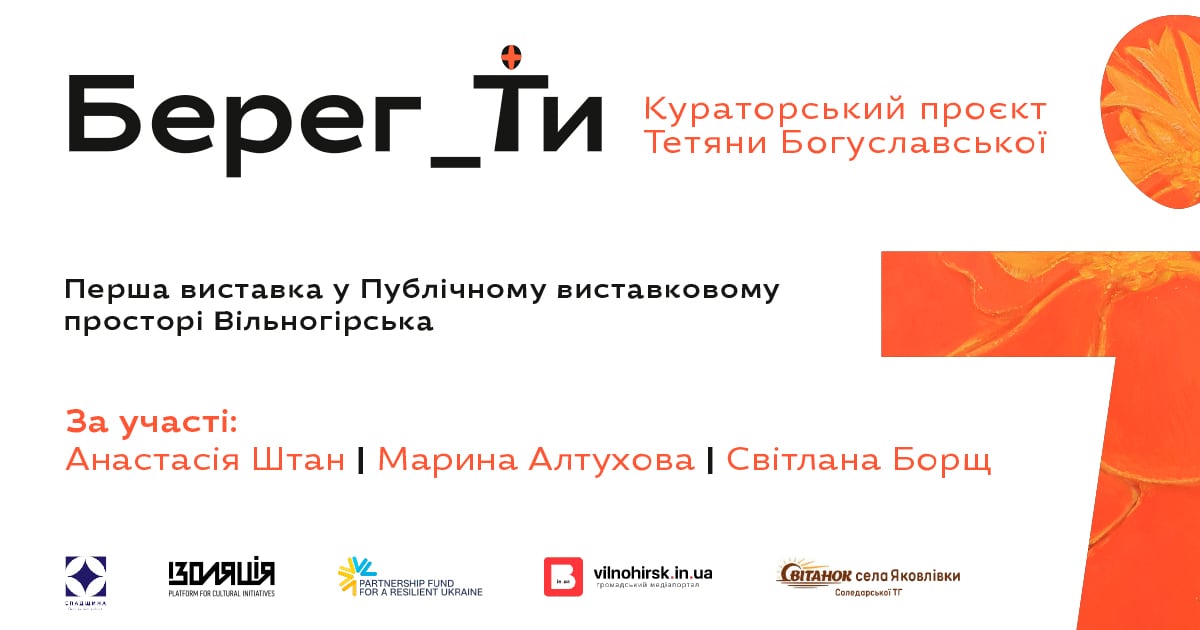
Group exhibition curated by Tetiana Bohuslavska as part of the Heritage. Practical Work art residency programme in Vilnohirsk.
The first exhibition in the Bereh_Ty public space in Vilnohirsk brings together works on the theme of amulets as a cultural heritage phenomenon. Amulets can be tangible and intangible things, our knowledge, memory, traditions passed down from generation to generation, as well as beliefs and meanings.
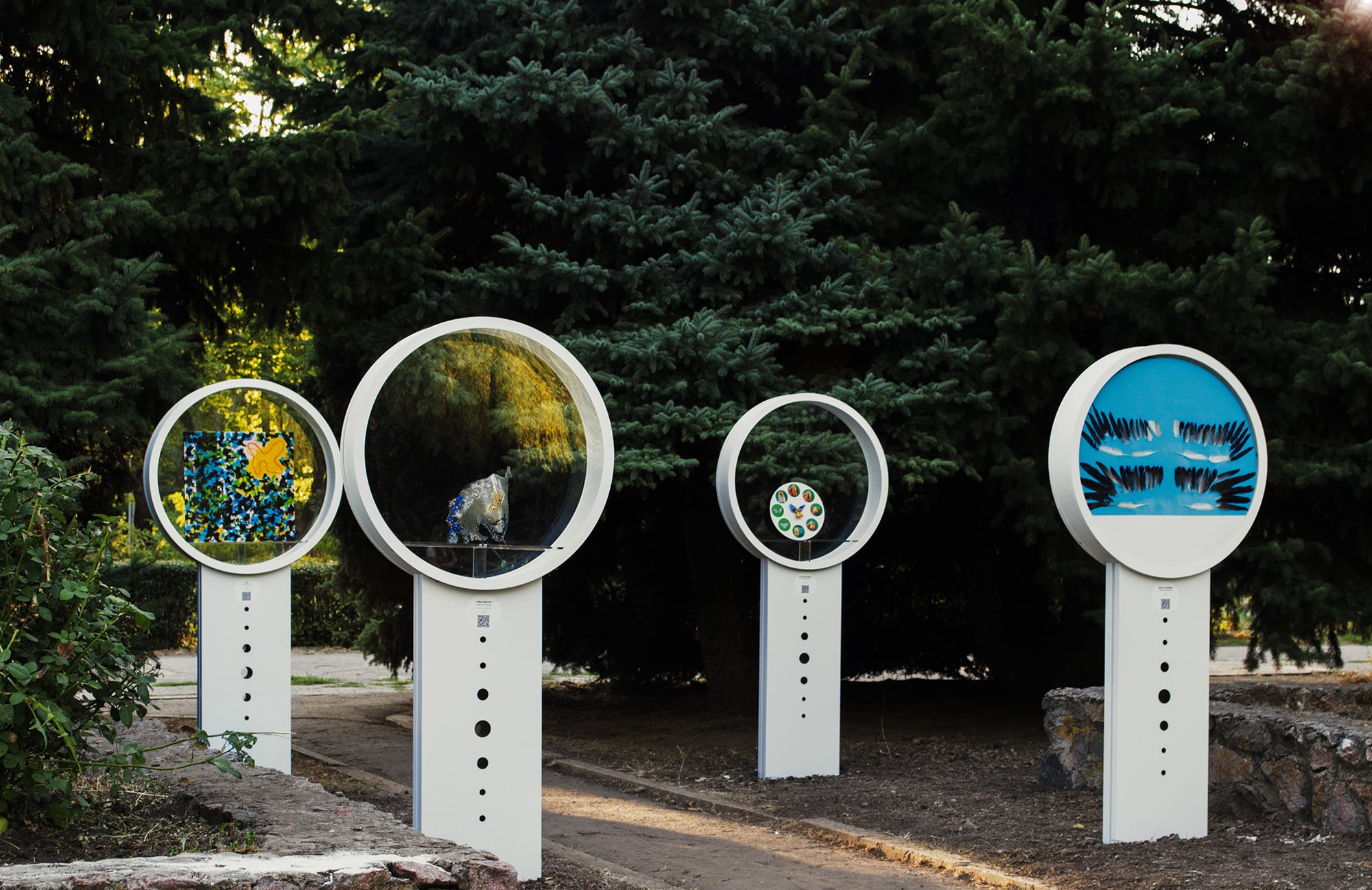
The Ukrainian etymology of the word “obereh” (amulet) is similar to the word “bereh” (shore), which has long been associated with safety, strengthening, and shelter. Ethnographers write that “bereh” [shore] means “to create shores”.
Thus, the name Bereh_Ty is a reminder that we are the very shelter, the home, that we have to protect and strengthen each other, as well as the memory of the Ukrainian tangible and intangible heritage.
The public space is intended to become a platform for exhibitions on topics relevant to the city's residents and for displaying their artworks in various techniques to ensure the visibility, preservation and continuity of Ukrainian cultural heritage and identity formation.
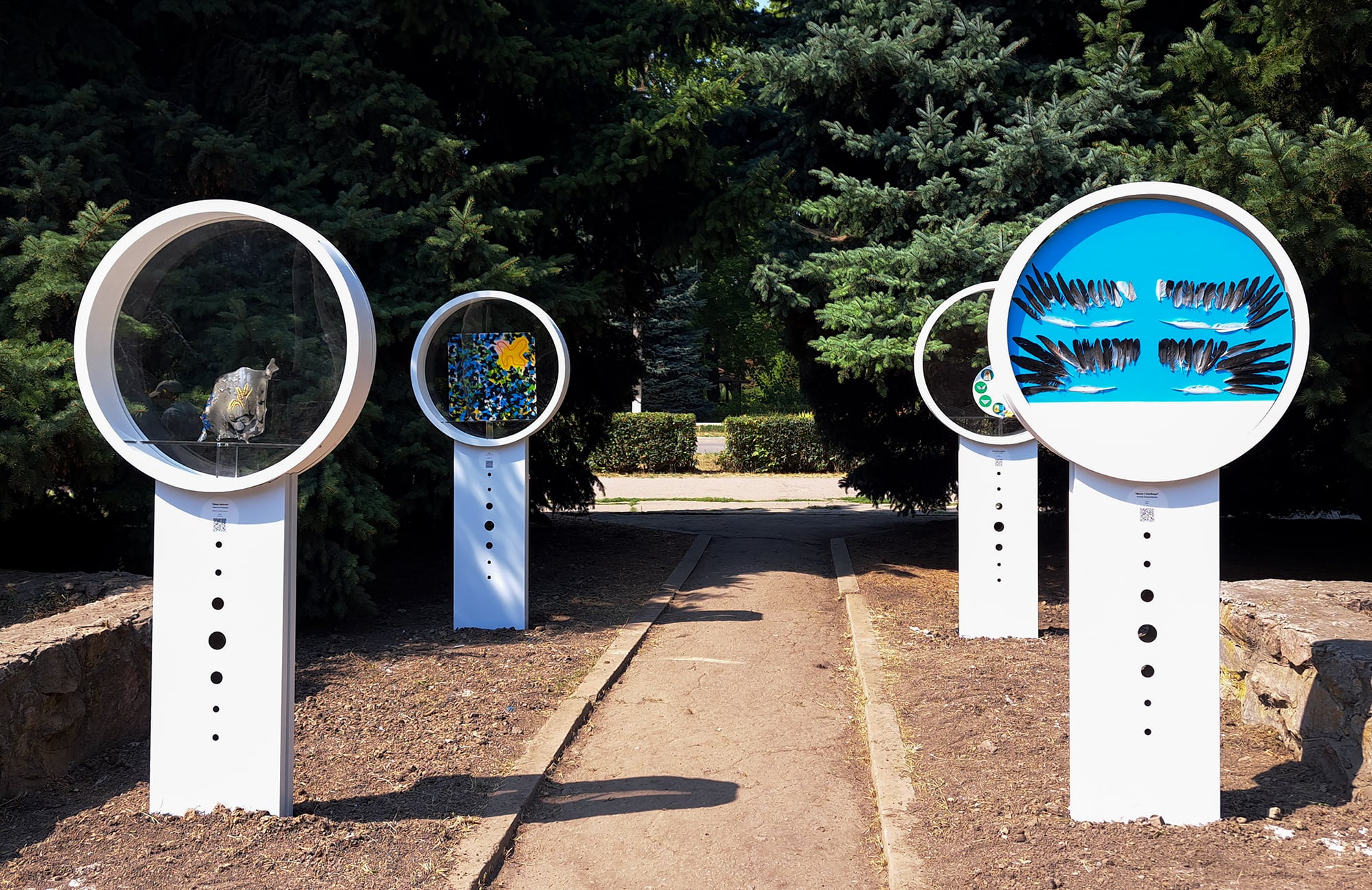
The idea of an exhibition space for Vilnohirsk emerged from several discussions and requests from local residents. The city is home to incredibly talented people, but there is no gallery space where their artistic activity could be represented, a place that would become a cultural centre for the townspeople and visitors, as the exhibition space can host participants from other towns and villages.
In times of war, when our cultural heritage is being destroyed, it is extremely important to appreciate those who live and create in various techniques, reproduce the knowledge of intangible cultural heritage, as this is also a component of victory.
The idea of the space project was formed by me, taking into account the peculiarities of various techniques and media used by artists, craftsmen and craftswomen, as well as the research of the city.
During the week-long research part of the residency, thanks to the editorial office of Vilnohirsk.in.ua, Tetiana Boguslavska had an inspiring meeting with local artists. In the dialogue, they came up with the idea of a joint exhibition.
The co-authors of the exhibition are: Anastasia Shtan, Maryna Altukhova, and Svitlana Borshch.
Tetiana Boguslavska
For me, the basis of the three works — artistic amulets created during the residency — is the Ukrainian language as a carrier of intangible cultural heritage — a living amulet of the people.
I have been practicing poetry for about nine years (I consider 2014 to be the starting point), and I had the opportunity and necessity to reflect on this experience in the artistic plane and express my own sense of the Ukrainian language. For me, home is not only a physical place, but also the process of poetic writing and artistic activity, and these practices have a sense of home. Language is a home... and a whole universe.
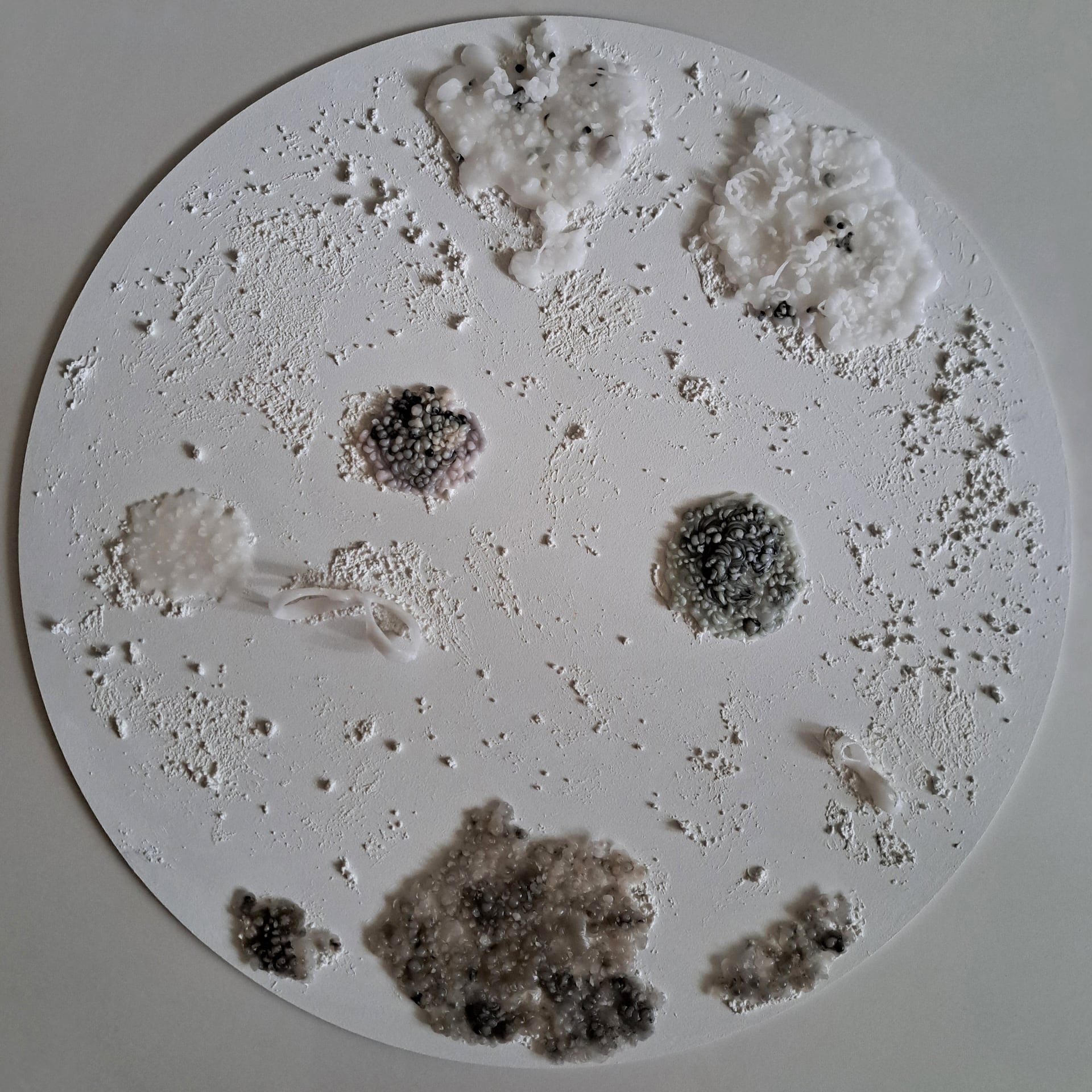
Diameter 50 cm
paraffin wax, structural paste, acrylic
In the work Movna Kolyska, I worked with paraffin wax, inspired by the technology of making wedding “wax” wreaths. In particular, the technology of making wax wreaths in Vinnytsia region is included in the National List of Intangible Cultural Heritage, but this practice was widespread throughout Ukraine, and now this technique is being revived and reproduced by many craftswomen.
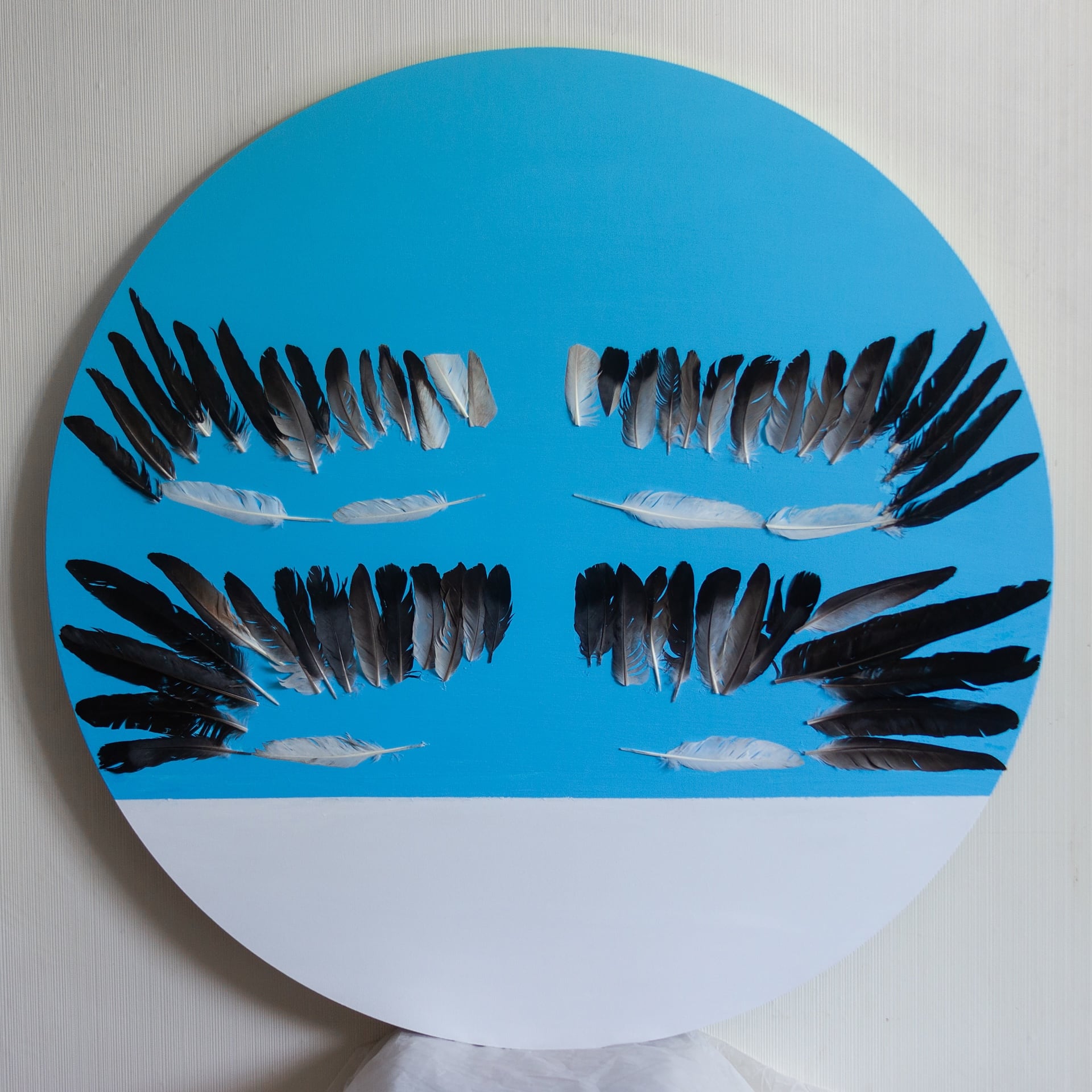
diameter 80 cm
canvas on stretcher, acrylic, feathers
Freedom and liberty are an inseparable pair. The struggle for freedom continues. Feathers and flight represent lightness, but as we know, lightness is the result of hard work. This work is about the path we choose, and it is also — literally — the path we take. I started collecting the “material” last year when I was worried and grieving for my beloved, and I perceived that the feathers on my path were a greeting, a sign that everything was fine.
I was inspired by an exhibit of a round wooden cradle for a child in the collection of the Vilnohirsk Museum of History and Local Lore, and by the white sands/dunes that look incredible on satellite images.
I am very grateful to the editorial team of Vilnohirsk.in.ua for providing me with working materials about the existing museum, as well as an introduction to the city.
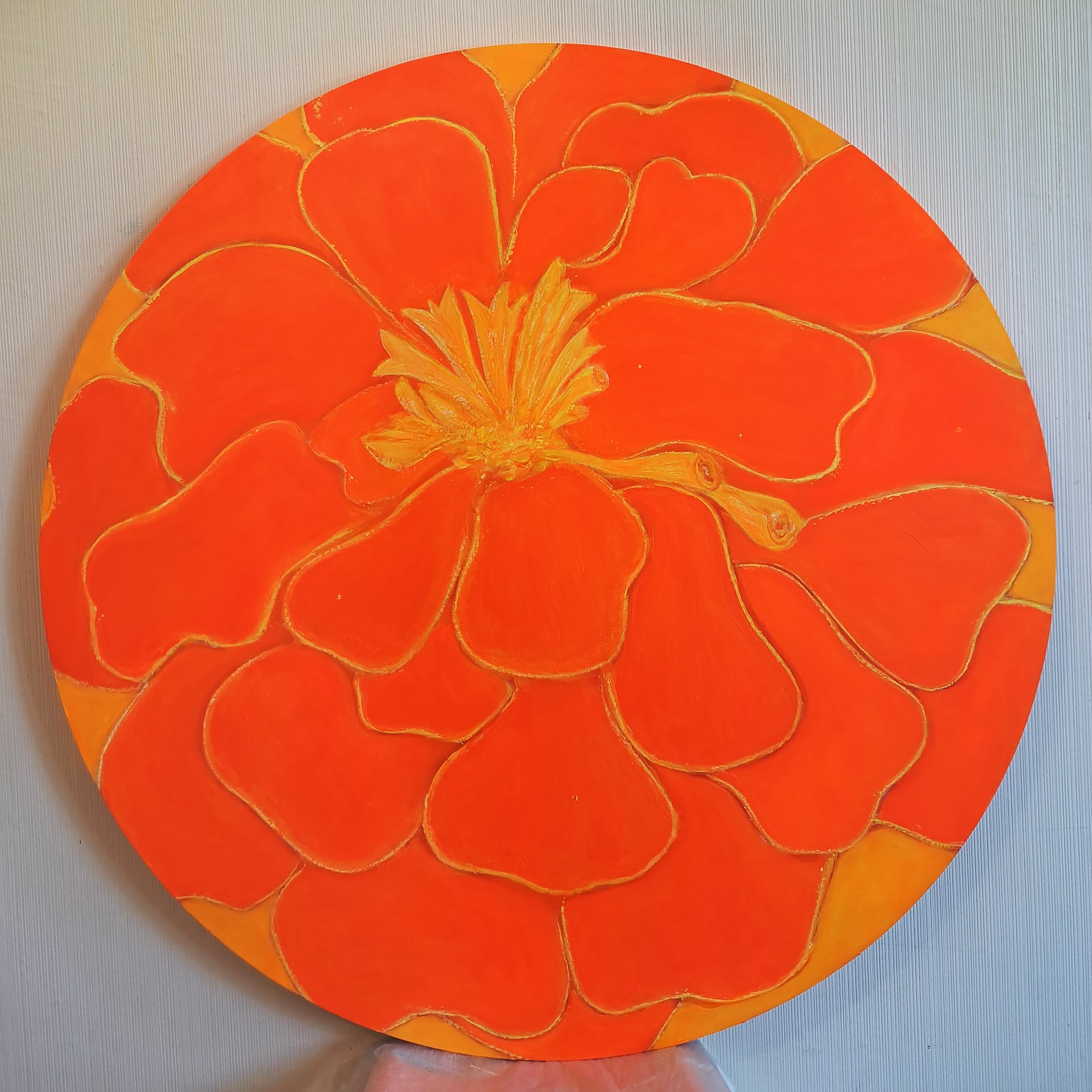
diameter 70 cm
canvas on stretcher, acrylic
The Garden of Language was one of the important layers of the sketch that I selected for the work. I decided to pay attention to one flower, as nature has the ability to infinitely reproduce structure (we owe the existence of fractal theory to Benoît Mandelbrot). Wiki notes that one gram of marigold seeds contains 280 to 700 seeds. In Ukraine, the marigold is a national symbol, with three types of this flower being common, and 59 species in total. Interesting facts that I found during my work: marigolds originate from Mexico, it is known that the Aztecs collected the wild plant and cultivated it for medicinal, ceremonial and decorative purposes. Marigolds are very beneficial for the soil, protecting it from depletion, as well as from various pests and diseases of garden crops.
During the residency, I created an audiovisual work called Six Meditations in Vilnohirsk, Ukraine. When I arrived in Vilnohirsk, it immediately became clear to me that there is a difference in our experiences of war from town to town. The locals had adapted to the audio of constant sirens. My friends later told me that they no longer even notice/hear them. I didn't adapt to it during my week there, and this video was rather a result of the need for this quick adaptation, and thanks to it. Because the perception was sharpened in a new place, which in a paradoxical way gave me some distance, a distance for comprehension and expression of both subjective and common experience. The meditations are political, the epigraph to this video work could be a line from a poem by Wisława Szymborska's Children of the Age— “Apolitical poems are also political, and the moon is shining above, the object is no longer lunar…”.
Anastasiia Shtan
The artist was born in 1997 in Vilnohirsk. She graduated from art school, where she received a basic education in drawing and painting. After entering the university, she moved to Kyiv, where she studied fashion design. Since the beginning of the war in Ukraine, she has lived in two cities — Kyiv and Vilnohirsk.
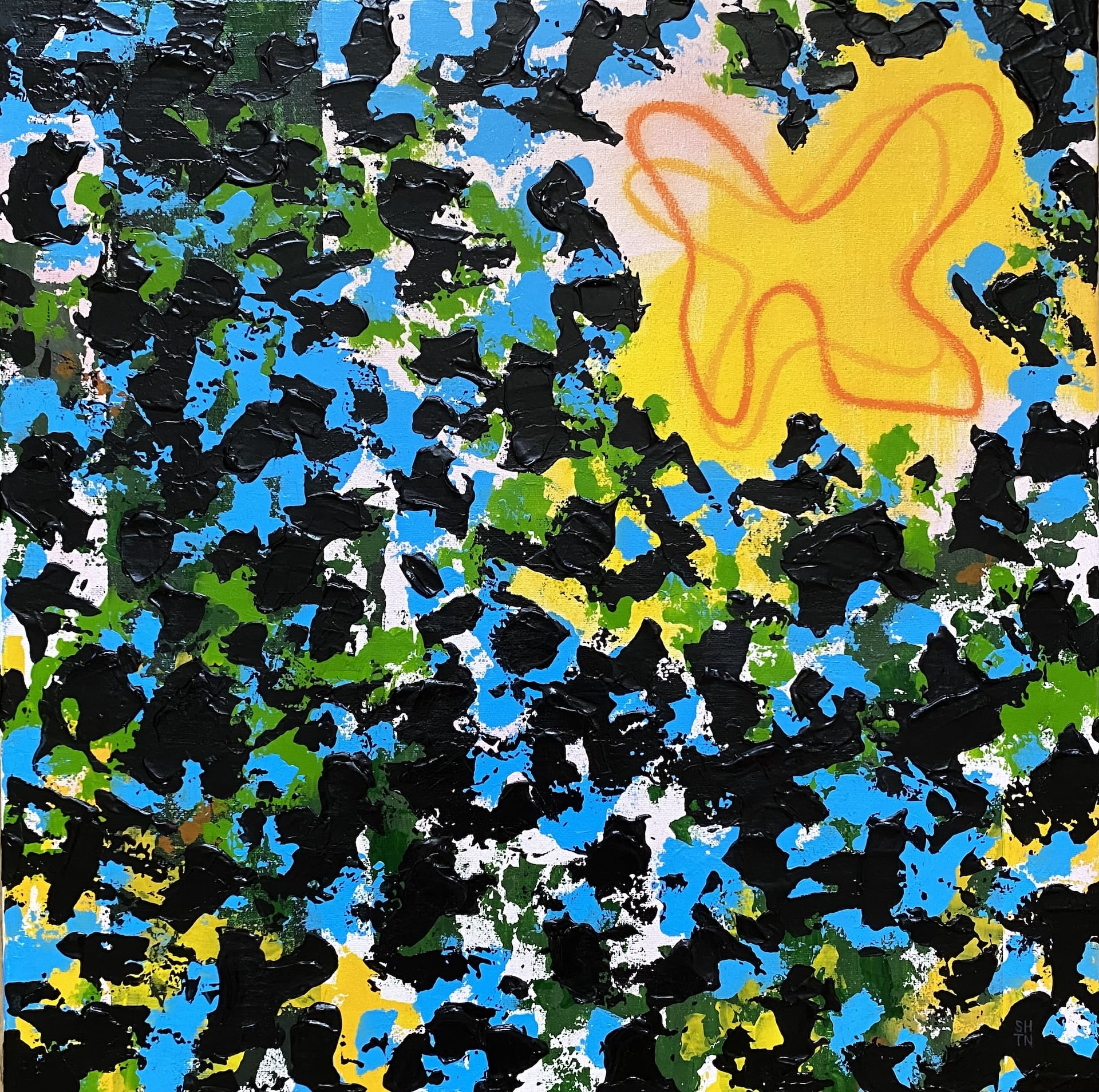
50 x 50 cm, canvas on stretcher,
acrylic, aerosol, oil pastel
Memories of home, when it is too far away, work as a psychological and mental amulet. Endless fields, the sun that gives rise to life, and the sky that always watches over it.
I realised that a talisman can be not only material, but also psychological and mental. It protects us from negative influences, helping us to maintain inner peace and stability. A psychological amulet can be created through memories that remind us of home and safety. A mental amulet is formed through positive thoughts and belief in a better future. Such amulets help to maintain morale even in the most difficult times. They become a source of strength and inspiration, allowing you to overcome difficulties and keep in touch with your roots.
With the outbreak of war, death reminds us of ourselves on such a large scale that it is very difficult to ignore it. Therefore, when there were many more thoughts about it, a series of paintings began to emerge: “Every light begins with darkness, every darkness begins with light”. This series was also inspired by the study of the doctrines of reincarnation, where the central point is the belief that after the end of one life, we are not only faced with darkness, but also with the prospect of a new beginning. In my works, I wanted to reflect not only the cyclical nature of life, but also the infinite possibilities that open up to us in the eternal cycle.
Works by Anastasiia Shtan
From the series Every light begins with darkness, every darkness begins with light

32x25, acrylic paper, acrylic, oil pastel, aerosol, charcoal pencil.
A vivid and emotional dream that does not let go of consciousness for a long time after waking up leaves the question: was it just a dream, or something more?
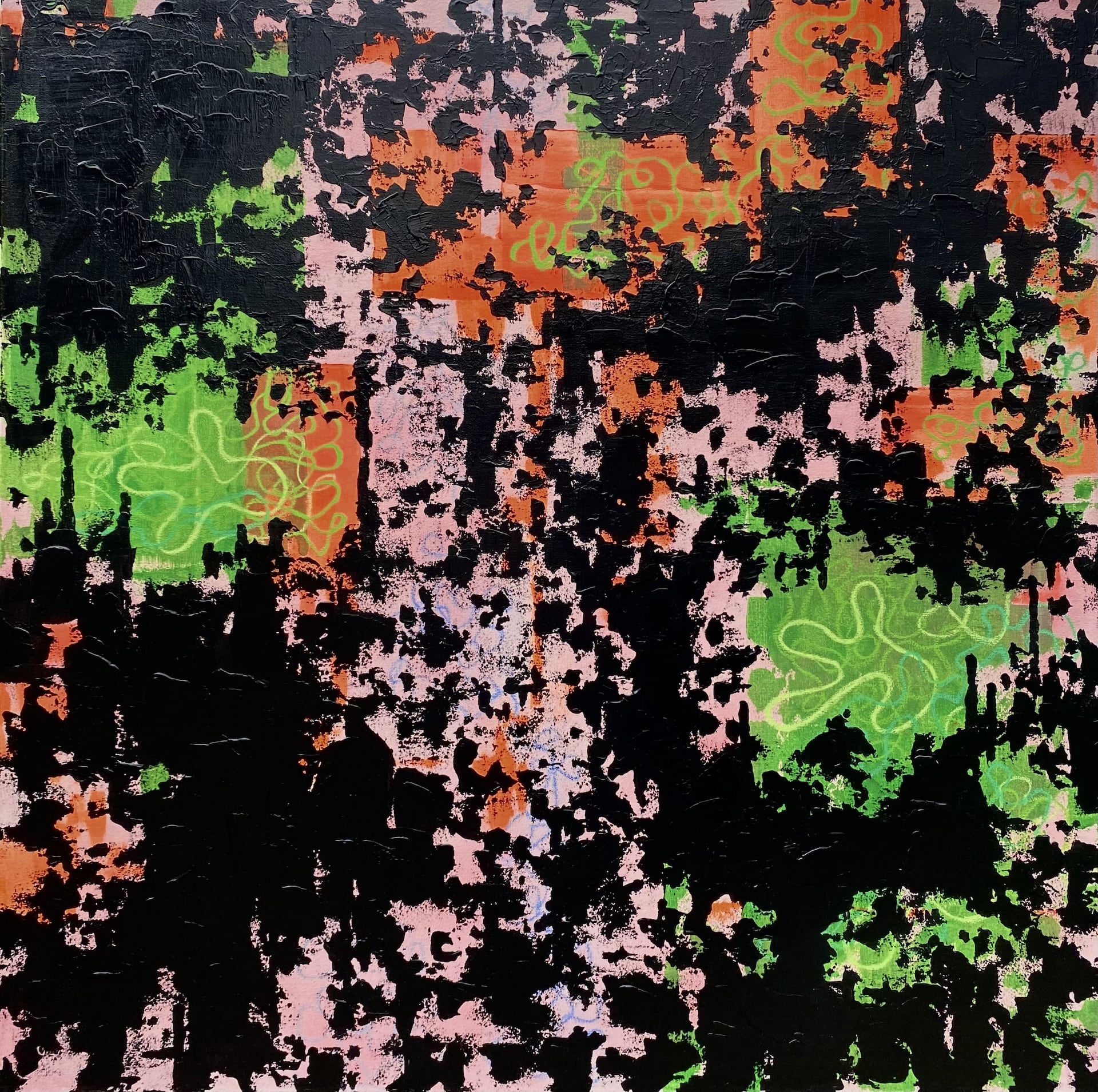
90x90; canvas on stretcher, acrylic, aerosol, oil pastel
Attempts and failures, inspiration and fatigue are all one, valuable and unique, inspiring our actions and shaping our lives.
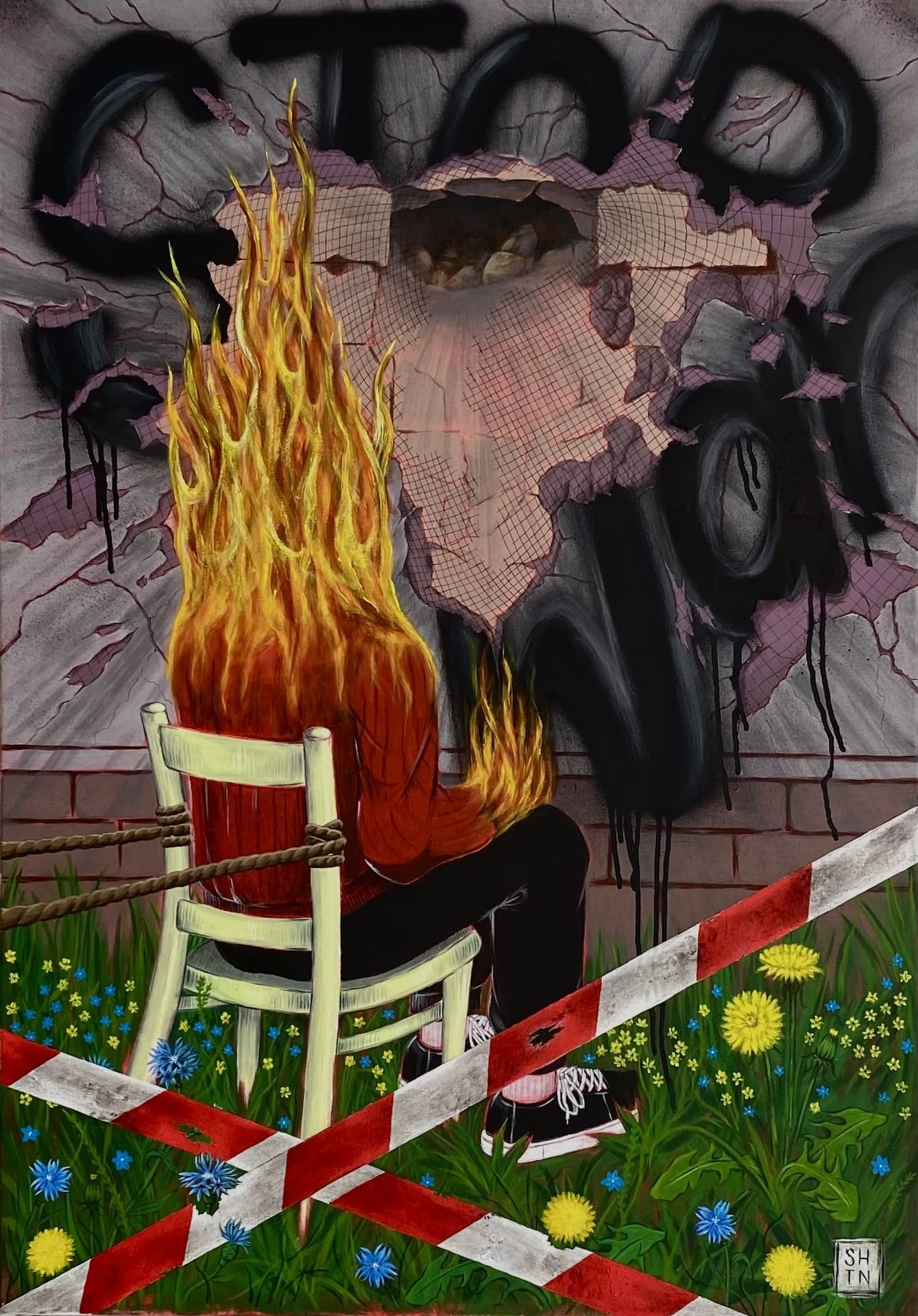
"On 23 February, we went to sleep as one person and woke up as a completely different person, and this is irreversible, but it is impossible to measure or put into the framework of any indicators how much stronger we have become.
We will definitely win, and on the ruins we will build a new, brighter future in which there will be no place for those words that cut to the heart every day," Anastasia writes.
Maryna Altukhova
An artist and volunteer who works with painting war artefacts. She is also a decorator and master of the Petrykivka painting technique. She was born and lives in Vodyane village, Kamianske district, Dnipro region.
She works as a principal and art teacher at the Bykivska Gymnasium of the Bozhedarivka Village Council.
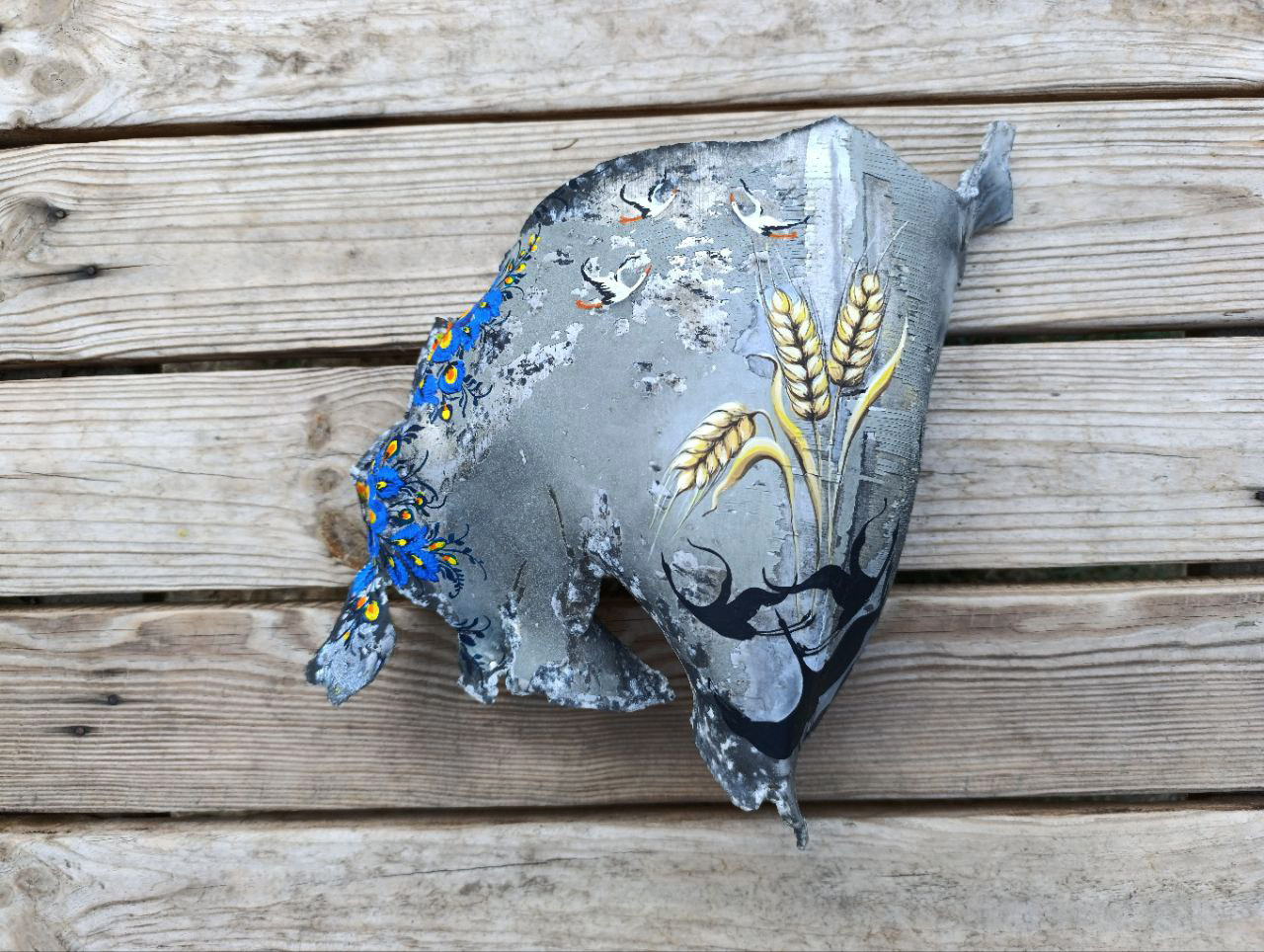
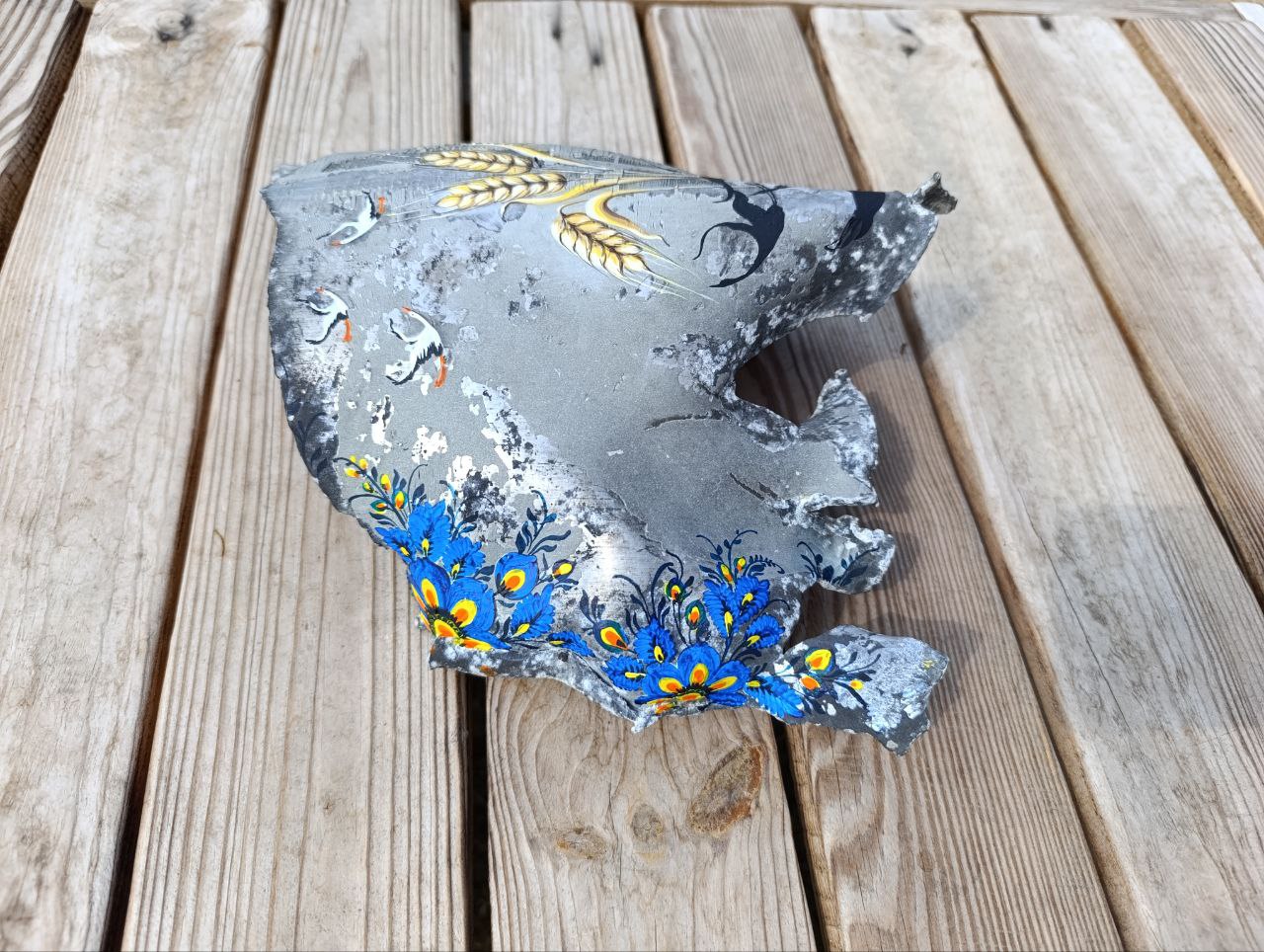

painting a rocket fragment
“The black silhouettes are our fallen soldiers, thanks to whom we can grow bread, this life. And the white ones are our defenders, who defend the Motherland and ‘hold the sky’. When I was looking for shrapnel, they were small or too heavy, and this one was from a downed missile over our village that broke a window in the school…”
Works by Marina Altukhova
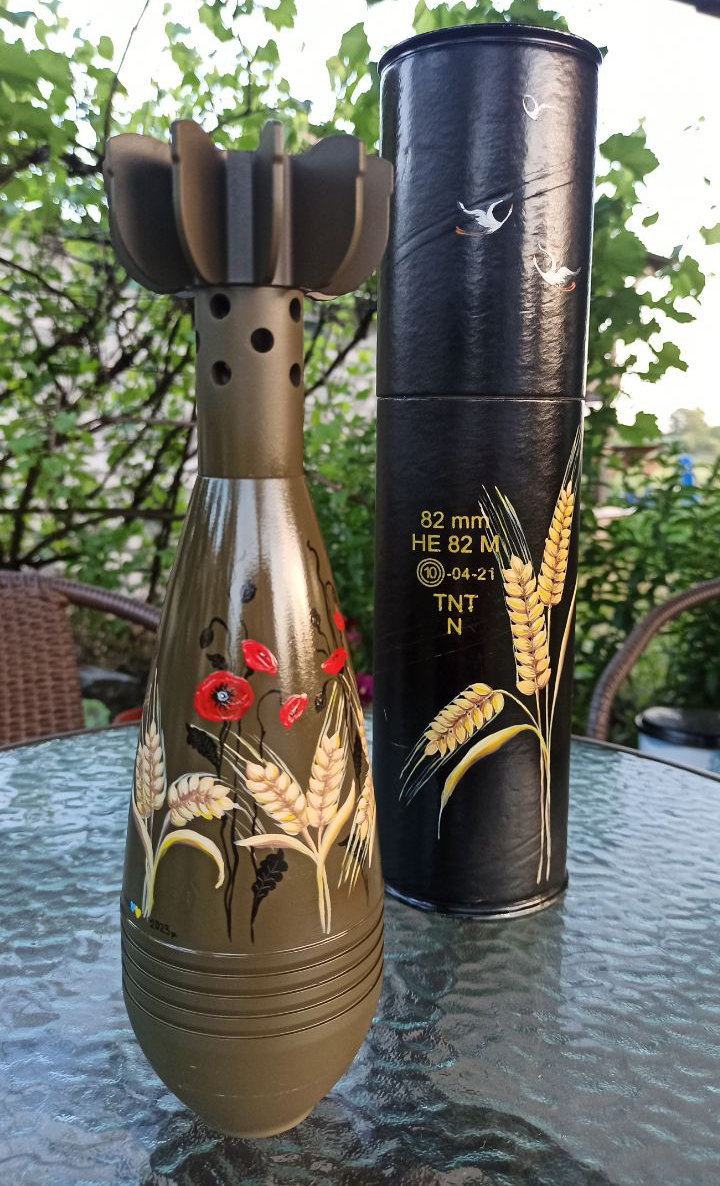
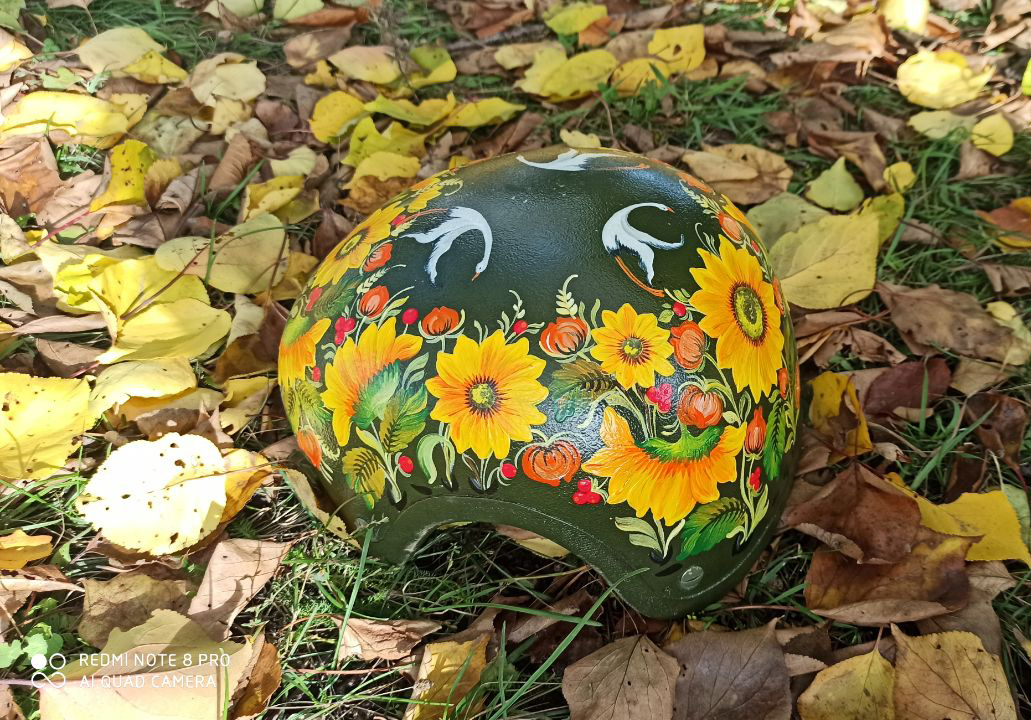
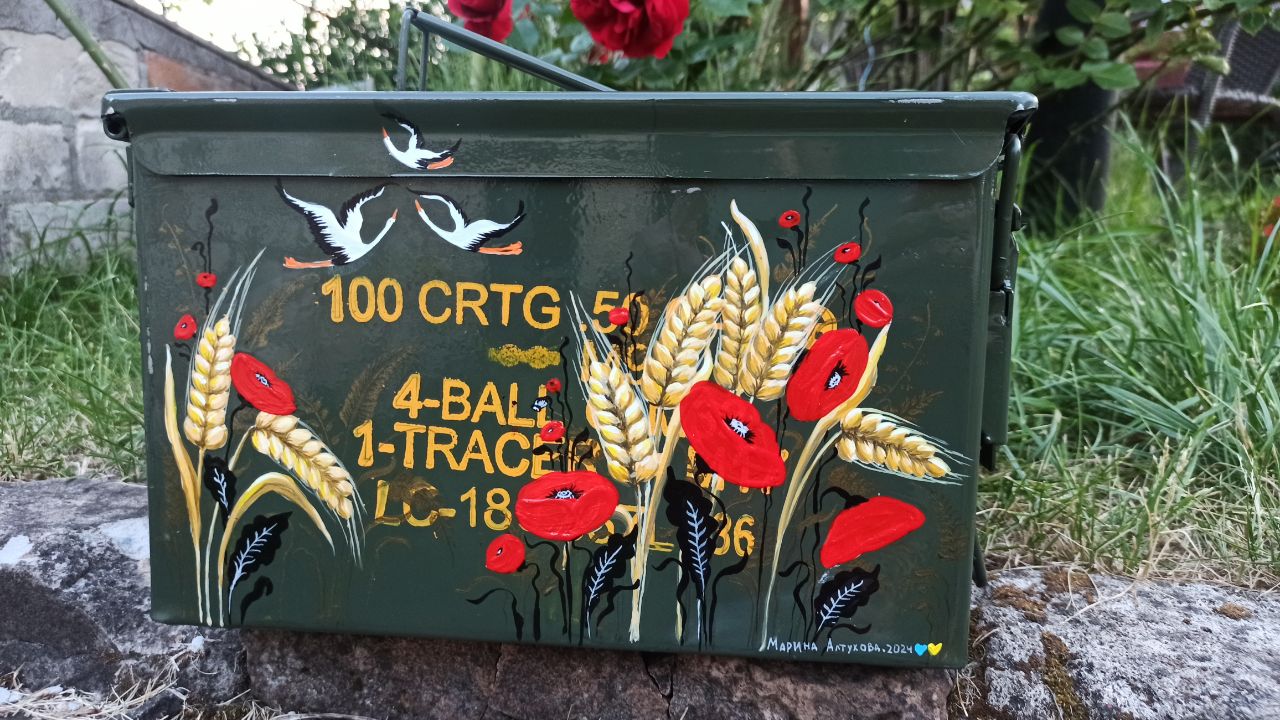
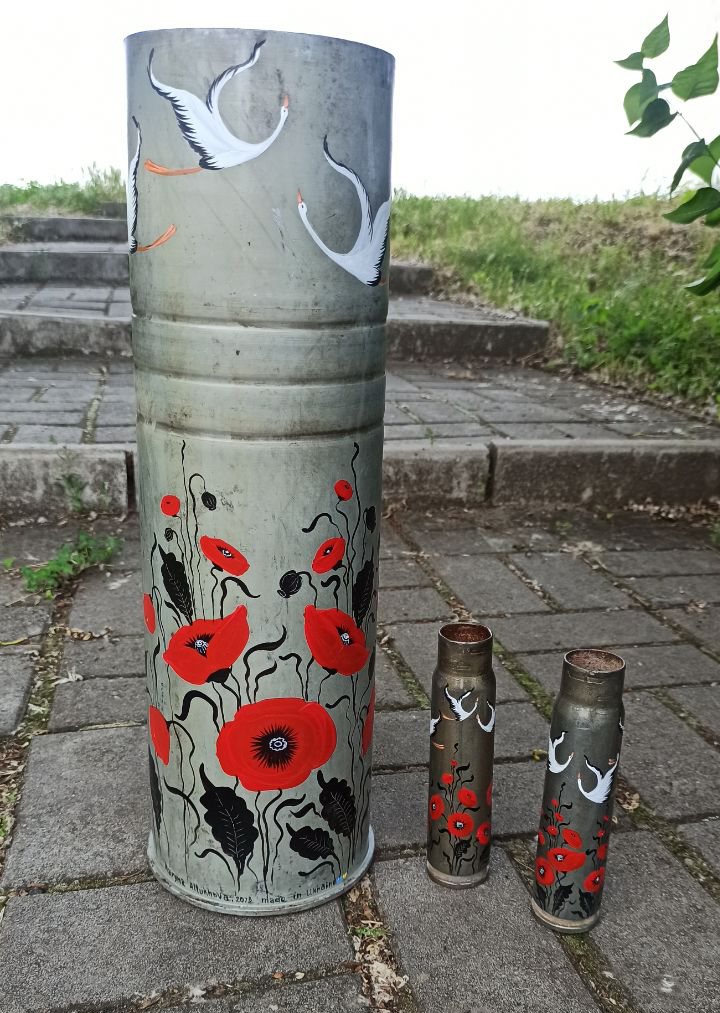
Svitlana Borshch
Svitlana was born in Makiivka, Donetsk region. She grew up and lives in the Dnipro region. Firstly in Pyatikhatskyi district, and after marriage — in Vilnohirsk.
She is engaged in cross-stitch, satin stitch and netting. She has created a small collection of Easter eggs made in various techniques — from decoupage to beads. She is fond of making motanka, for which she embroiders the outfits herself.
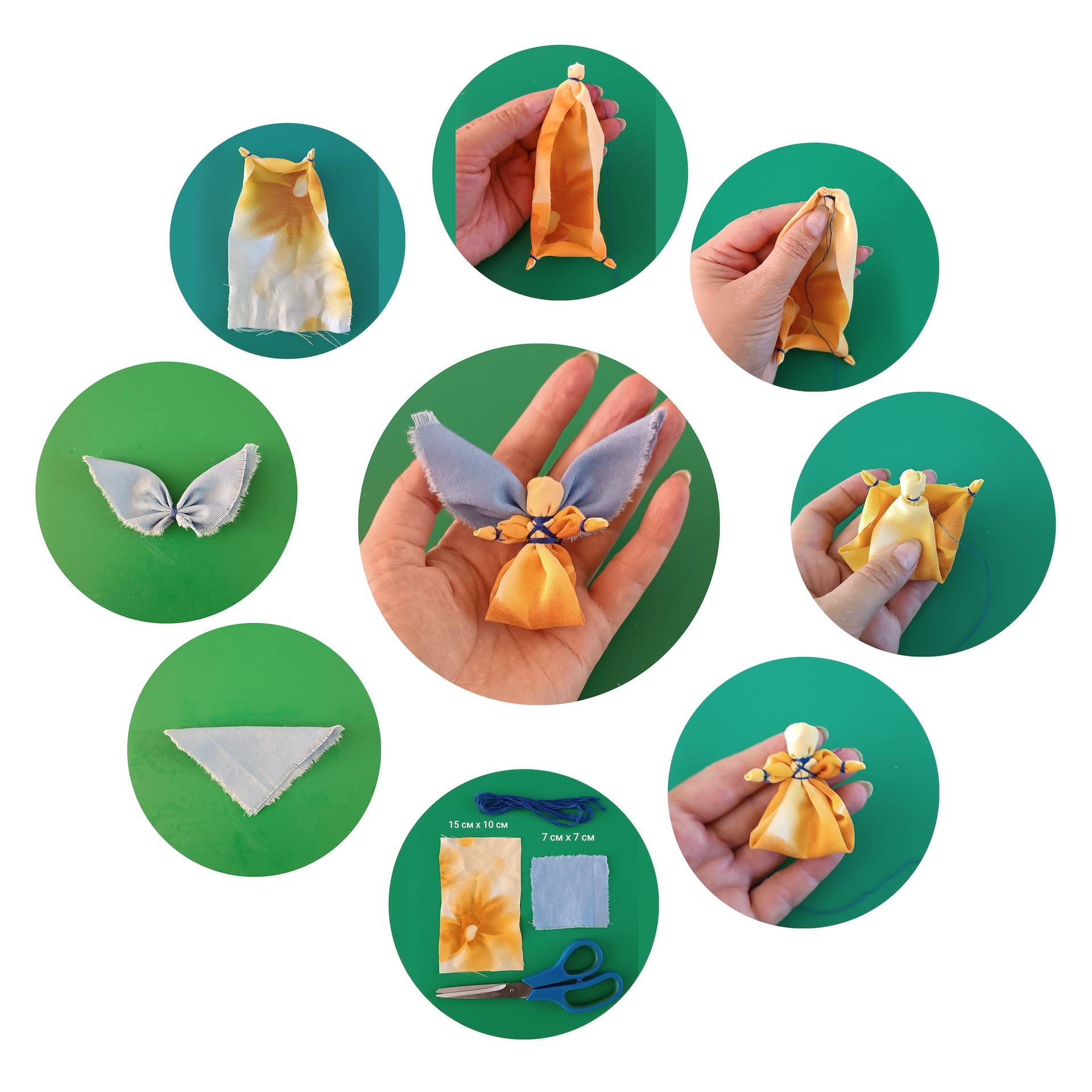
“When the question of amulets for warriors came up, I found this angel on the Internet. I must have made more than a hundred of them. I don't know which units the volunteers sent them to. I hope they protected everyone they got to.”
Works by Svitlana Borshch
.jpg)
.jpg)
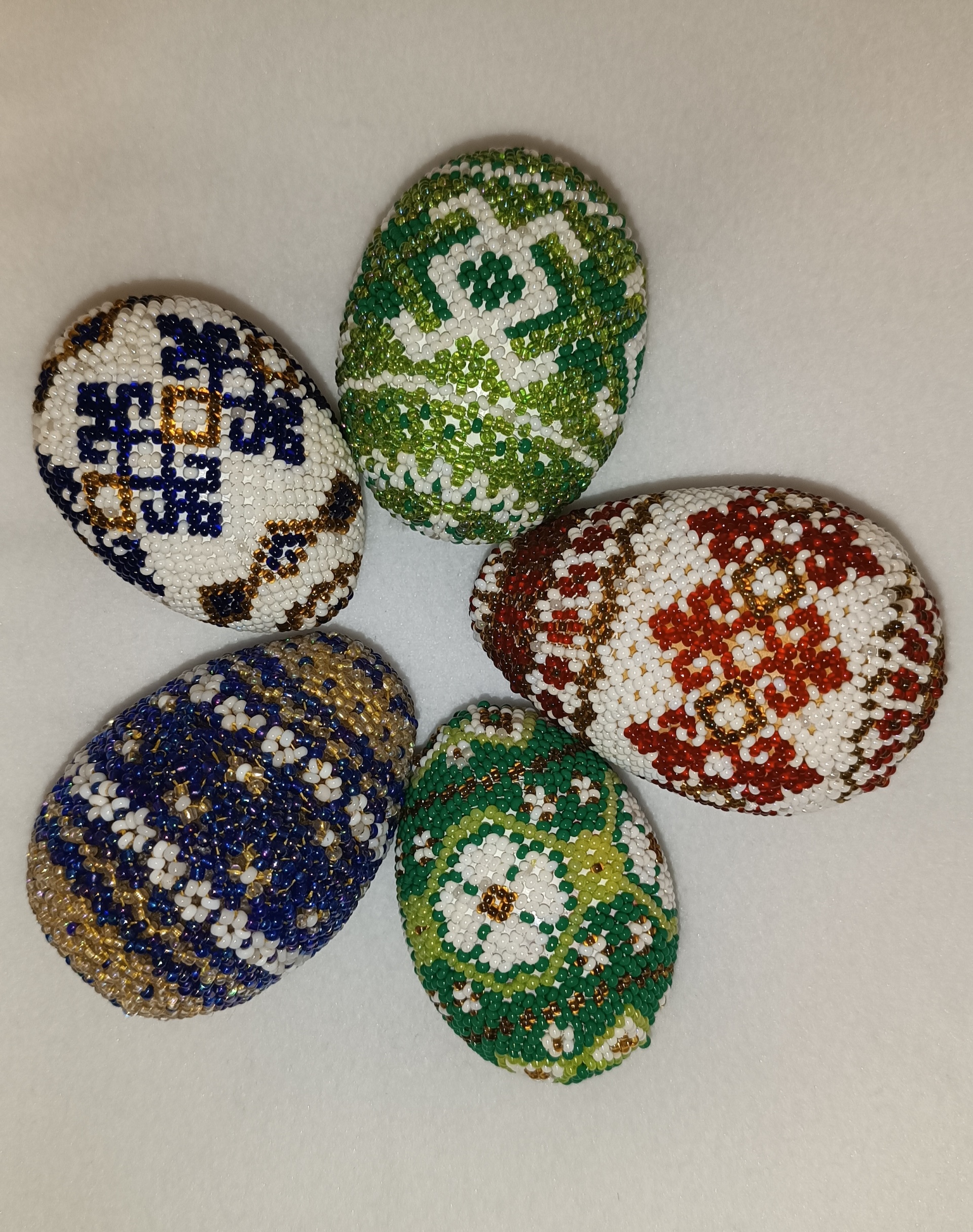
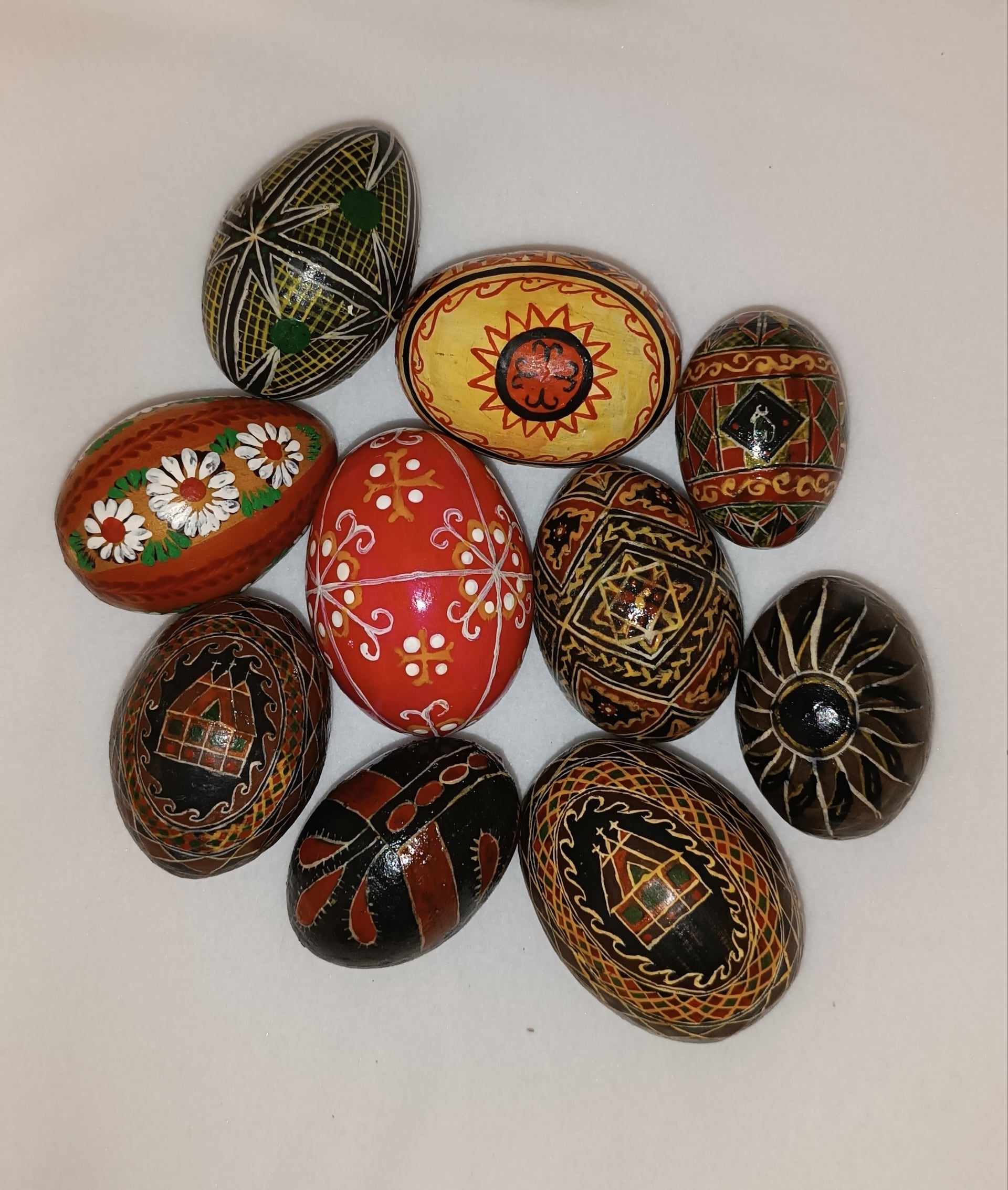
.jpg)
.jpg)
The capacity building and networking program for local cultural operators Heritage: Space for Work is supported by the Partnership Fund for a Resilient Ukraine (PFRU), funded by the governments of Canada, Finland, the Netherlands, Sweden, Switzerland, the United Kingdom, the United States of America and the United States of America.